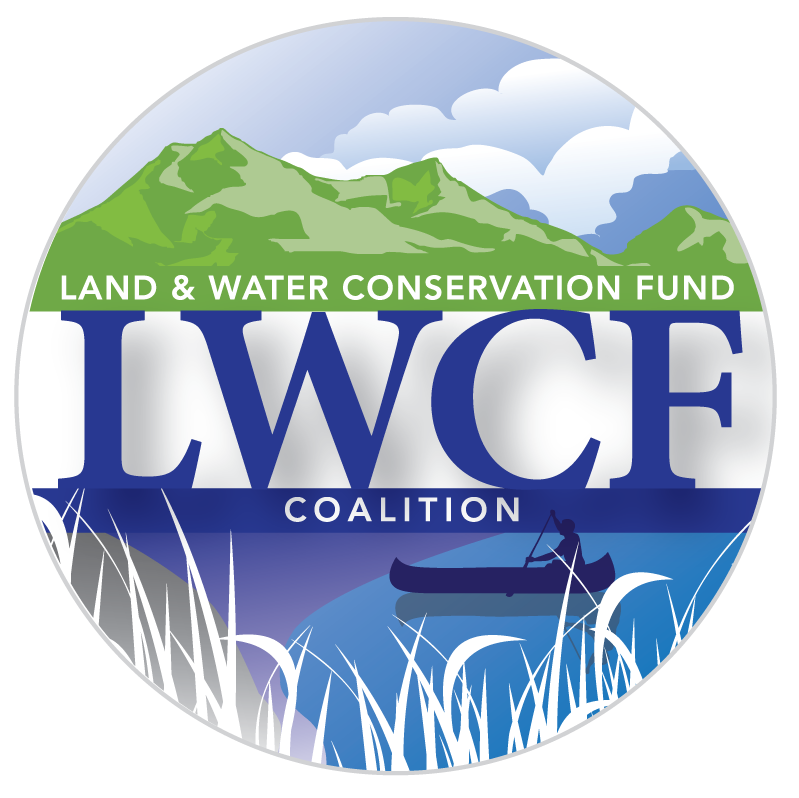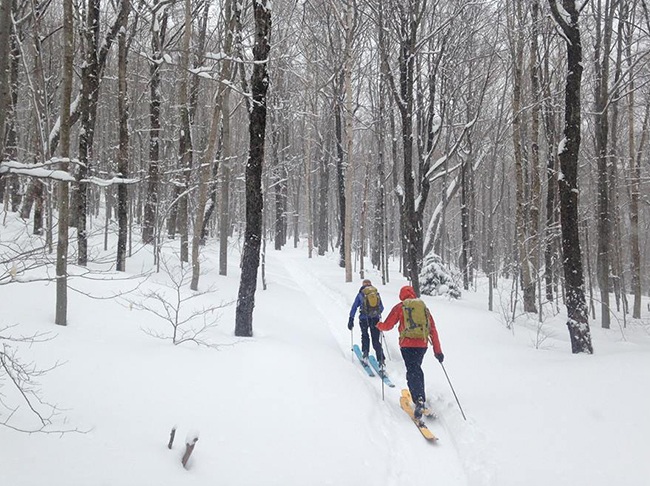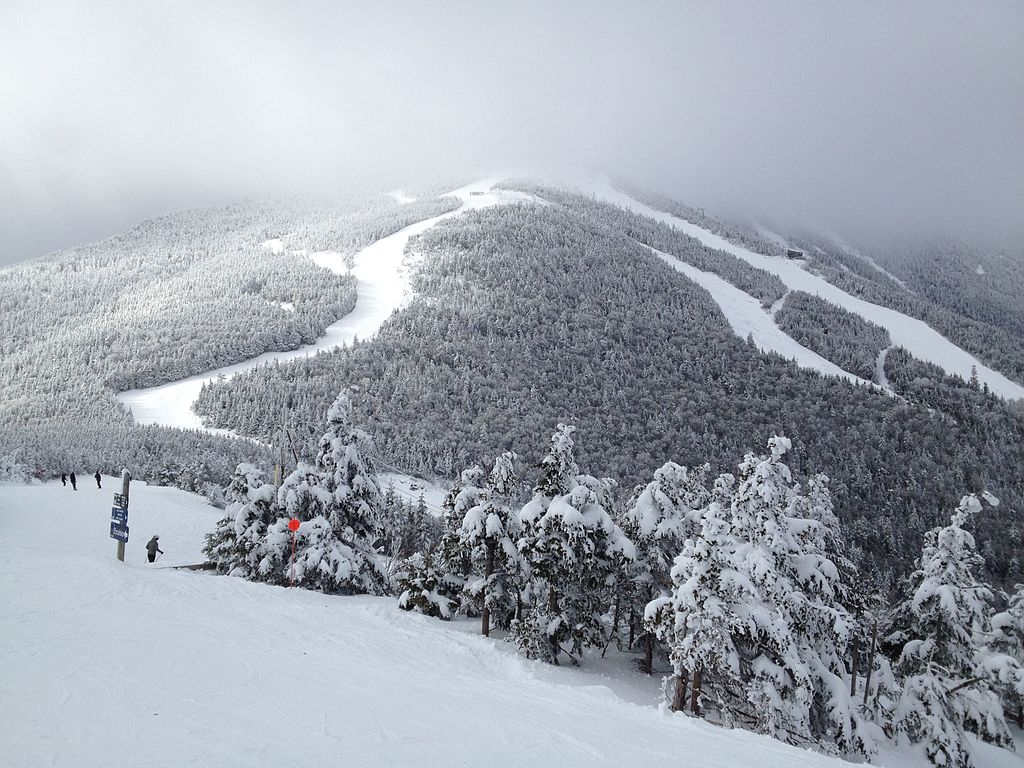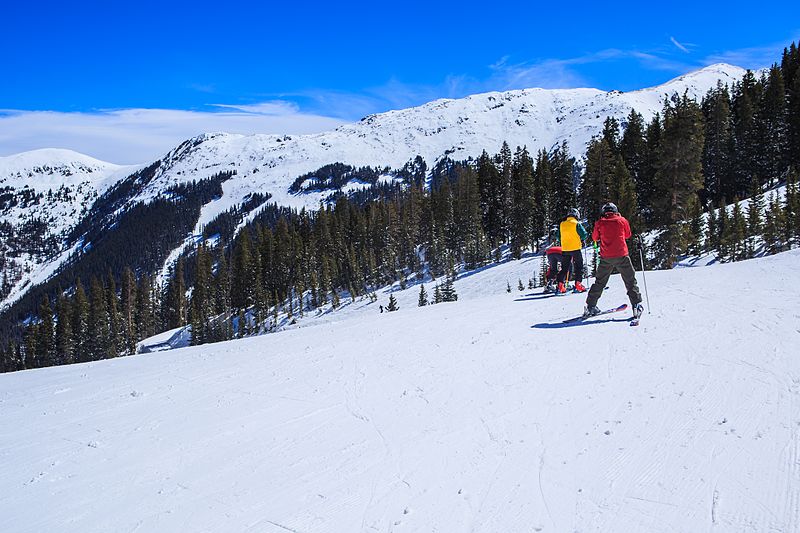Winter WonderLANDS, LWCFstyle
Winter is an excellent time to get outdoors when you bundle up and embrace the snow! Whether you are sledding, skating, snowshoeing, skiing downhill or cross country, ice fishing, ice climbing, or the many other winter recreation sports, odds are you are on public lands protected by LWCF. Wondering if your favorite spot to mush has received LWCF funding? Here we list some of America’s best winter wonderLANDS, protected by LWCF.
Green Mountain National Forest
Green Mountain National Forest in Vermont is a place where outdoor winter activities are abundant! This time of year, visitors enjoy snowmobiling through the backcountry, cross-country skiing on various forested trails, snowshoeing across fresh powder, and more. Green Mountain National Forest has received over $55 million in funding from LWCF, which has allowed continued protection of this iconic forest and the bountiful variety of outdoor recreation opportunities it provides all within a days’ drive of more than 70 million people in the Northeast.
Credit: USFS
Arapaho and Roosevelt National Forest
The Arapaho and Roosevelt National Forests in Colorado covers an expansive swath of the state - 1.5 million acres all the way up to the Wyoming border. Winter in the forests is truly an outdoor enthusiast's playground. Besides snowshoeing, wildlife viewing in Indian Peaks Wilderness, cross-country skiing and sledding, you can enjoy downhill skiing at the nearby popular Winter Park Resort or visit Loveland or Eldora Ski Areas. Over $30 million from LWCF has gone towards protecting these treasured forests, ensuring that we can continue to enjoy these winter adventures for generations to come!
Credit: USFS
Alpine Lakes Wilderness
Alpine Lakes Wilderness in Washington’s Okanogan-Wenatchee National Forest boasts 390,000 acres of lake-dotted, glacier-filled wilderness, with 615 miles of trails. It is a gorgeous spot in the Central Cascades for some winter fun. Enjoy skiing, snowboarding, snowshoeing, sledding, and even mushing if you're up for it! A whopping $61 million from LWCF has gone towards Alpine Lakes Wilderness to maintain trails and conserve this Washington state gem!
Okanogan-Wenatchee National Forest Credit: USFS
Lolo National Forest
At 2 million acres and bordering Idaho, Lolo National Forest in Montana is one of the best spots to challenge yourself to conquer numerous trails on your cross-country skis or snowshoes, spend a day at Lookout Pass or Snowbowl skiing or snowboarding, and fire up your snowmobile for an adventure on lots of fun terrain. LWCF helped protect this forest so it may continue to be one of the many awesome Montana outdoor recreation destinations!
Credit: Allison Springer
Adirondacks
An estimated 7-10 million people visit the Adirondacks each year, making it more popular than the Grand Canyon! Perhaps the most famous and recognizable mountain and ski resort is Whiteface Mountain, which has benefitted from LWCF state grants. Thanks to these investments, New York has one of the premier ski resorts in the country, hosting the alpine skiing competitions of the 1980 Lake Placid Winter Olympics. And while at Whiteface, don’t forget to bring your skates to enjoy the skate around Lake Placid or practice your hockey skills on the rink home of the Miracle on Ice!
Credit: Wikimedia commons
Lake Tahoe
Gorgeous mountain scenery, a crystal clear lake, large protected forests, and world renowned ski resorts make the Lake Tahoe Basin one of the most desirable ski and winter recreation destinations in America. LWCF investments of more than $160 million over the years in the area have been key to protecting the beauty and quality of the lake and surrounding forests making this a top winter destination for skiers, snowboarders, and families looking to enjoy the beauty of Lake Tahoe in the winter.
Credit: USFS
Sleeping Bear Dunes National Lakeshore
This place is one of the most beautiful shorelines in America and well-known for its magnificent towering sand dunes and beaches, but Sleeping Bear Dunes National Lakeshore in Michigan is not to be missed in winter with ample trails to snowshoe or cross-country ski and lakes to ice fish. A more thrilling winter experience can be sampled at the famous Dune Climb near Glen Haven, where the National Park Service allows sledding on the 260-foot face of the dune! With over $96 million in LWCF for Sleeping Bear Dunes, one of the largest LWCF investments in the country, it is safe to say that without LWCF, the Sleeping Bear Dunes we have today would not exist.
Credit: NPS/Kerry Kelly
Bear River Migratory Bird Refuge
Bear River Migratory Bird Refuge in northern Utah is an oasis for waterbirds and wildlife. The wildlife refuge protects the marshes found at the mouth of the Bear River - the largest freshwater component of the Great Salt Lake ecosystem - and provides critical habitat for over 250 species of migratory birds that move through the area annually by the millions to rest and feed. If you visit here in the winter, you can see prairie falcons, bald eagles and hawks searching the frozen landscape for prey. LWCF has invested nearly $3 million in this refuge, ensuring the protection of this significant bird habitat!
Credit: USFWS
Taos Valley
You may not think of New Mexico as a skiing destination, but Taos Valley is an enchanting place to ski in the desert! With white powder snow mountains, rugged wilderness of the Carson National Forest, and few crowds, Taos Valley and the Sangre de Cristo Mountains should be on your bucket list to visit this winter. While you are here, take a hot air balloon ride and hover above the Rio Grande Del Norte National Monument, another great place to visit for some excellent winter hiking, all protected thanks to LWCF.
Credit: Murray Foubister via Wikimedia Commons
Minneapolis
Minneapolis and all of its city parks are great places to play in the winter and sets the bar for great city parks that can be enjoyed year round! There are outdoor rinks at 24 parks for skating, hockey, and broomball. Want to go sledding, or have a friendly snowball fight? The city parks are filled with kids and families looking for fun in the winter. The Mississippi River National River and Recreation Area, an urban national park protected by LWCF, also runs through the city, providing access to more winter activities such as snowshoeing, ice fishing, and winter hiking.
Credit: Wikimedia Commons










